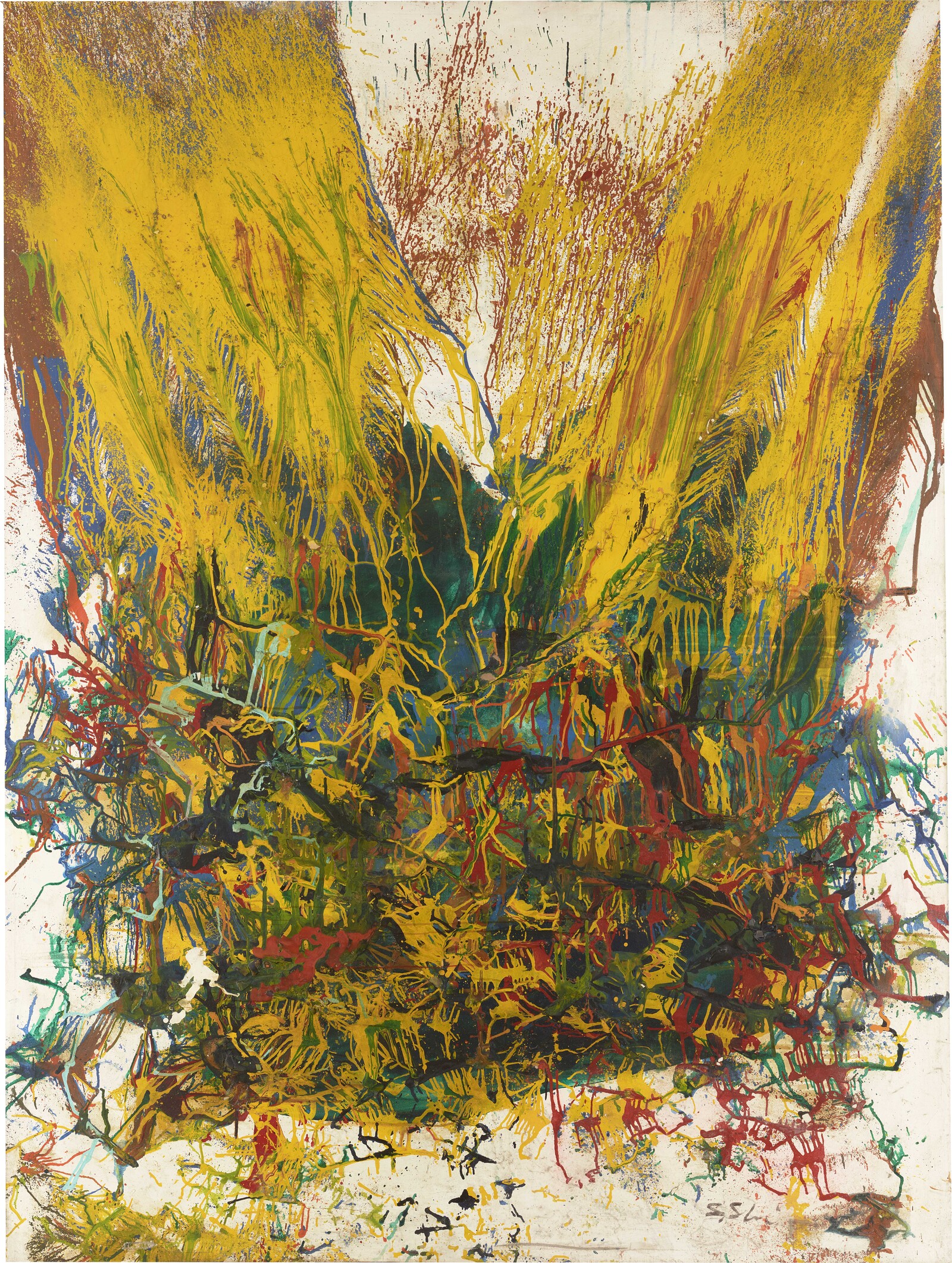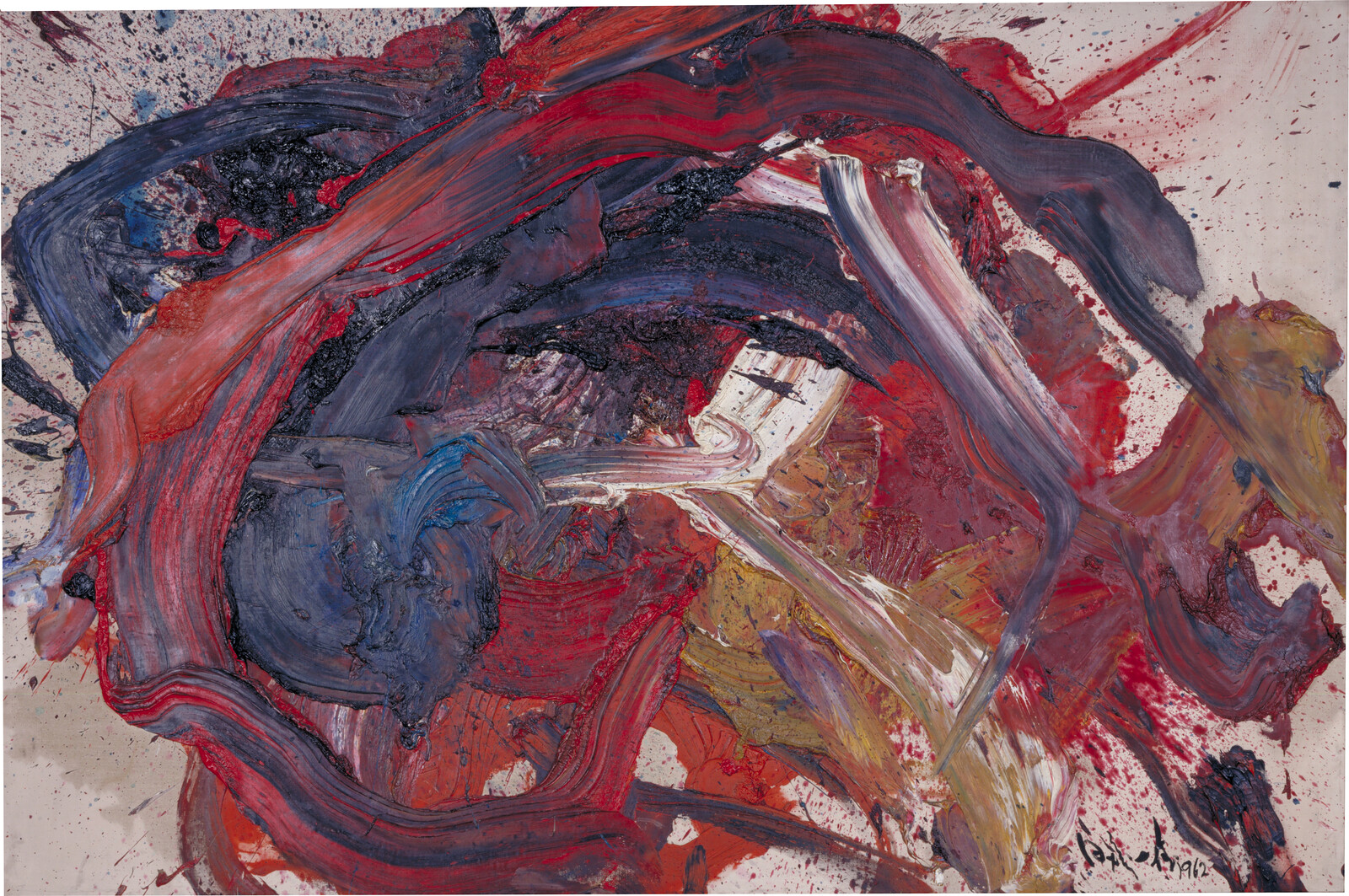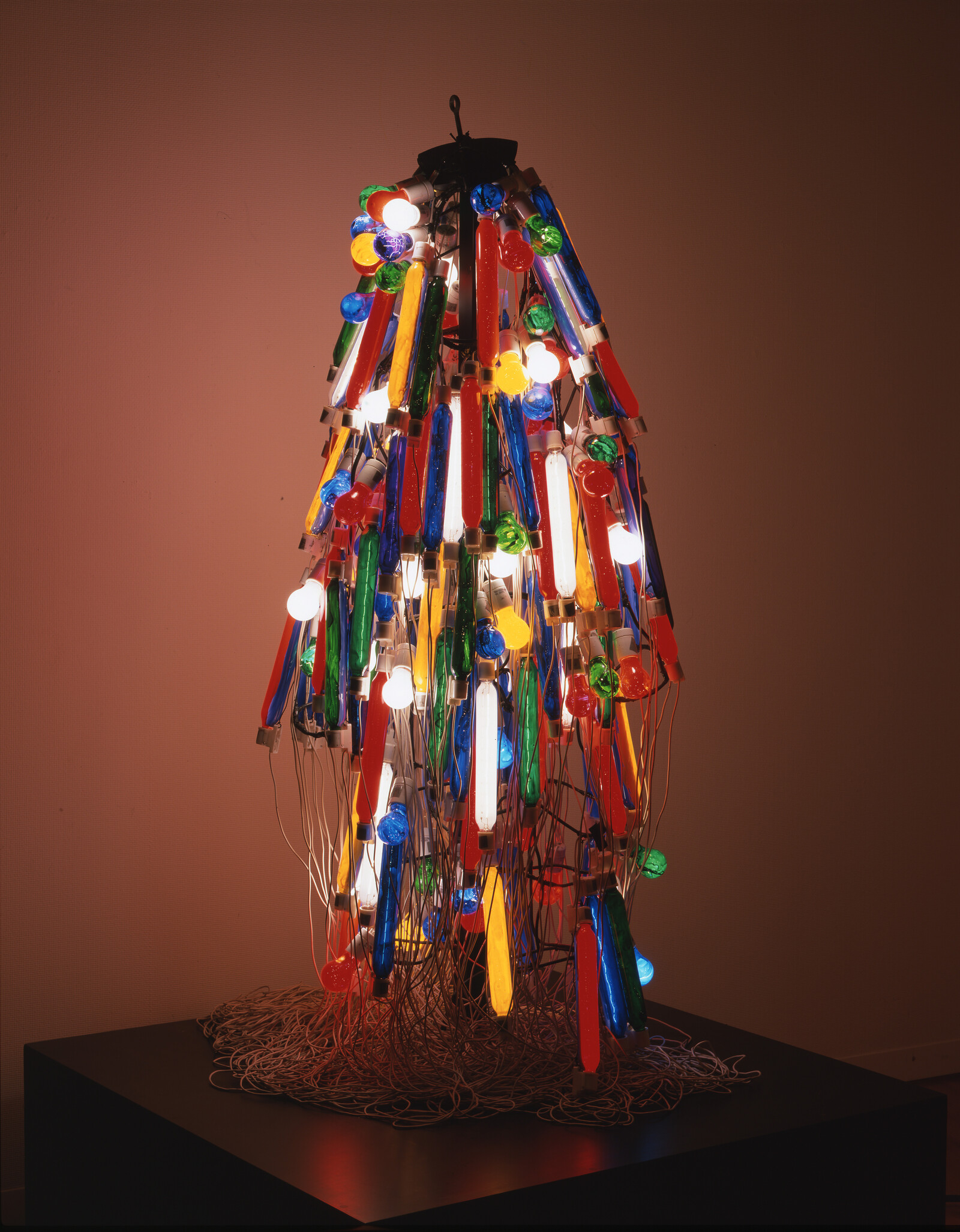Into the Unknown World—Differentiation and Integration
October 22, 2022–January 9, 2023
www.nmao.go.jp
Instagram / Instagram / Twitter / Twitter / Facebook / Instagram / YouTube / YouTube
This exhibition is presented at two venues: Nakanoshima Museum of Art, Osaka (NAKKA) and the National Museum of Art, Osaka (NMAO).
Admission fees, opening hours and closing days differ according to the venue.
Summary
The Gutai Art Association (Gutai) was a collective of artists established in Ashiya (in Hyogo Prefecture, close to Osaka) in 1954. Painter Yoshihara Jiro (1905–72) was the central figure in the association. Through painting and a variety of other practices, the Gutai artists set out to express themselves freely without being confined to existing precedents. Today, Gutai is regarded as origin of Post-war Japanese art, also known as almost like a legend of that period and has finally attained national and international prominence that it deserves.
This exhibition takes a fresh look at Gutai’s trajectory from two perspectives: differentiation and integration. This approach has some commonalities with the Gutai attitude of attempting to be a coherent collective while individually producing different work that does not fall into the trap of imitating someone else’s art. This follows Yoshihara’s view that art should ideally involve the human spirit and matter shaking hands but remaining apart.
The two venues for this exhibition—the Nakanoshima Museum of Art, Osaka and the National Museum of Art, Osaka—are both located on the island of Nakanoshima in central Osaka, making this the first major Gutai exhibition to take place where Gutai established the Gutai Pinacotheca, its studio and exhibition space. The Nakanoshima Museum of Art, Osaka focuses on the “differentiation” of Gutai, exploring the individual creativity of its artists, while the National Museum of Art, Osaka focuses on Gutai’s “integration,” following the undulations of the collective’s experimental course. This combination of differentiation and integration results in a new understanding of Gutai. Gutai included both male and female artists. Presented in 2022, fifty years on from the dissolution of Gutai, this exhibition provides a timely examination of what happened when they set out “into the unknown world.”
Differentiating Gutai: Differentiation
Nakanoshima Museum of Art, Osaka
Gutai has always had a reputation for innovation and creativity. Yoshihara Jiro’s succinct exhortation to “Do what no-one has done before!” has come to symbolize that approach. The phrase is often quoted, but but the true details of Gutai’s innovation and creativity are not generally known.
Taking up the theme of differentiation, the Nakanoshima Museum of Art, Osaka extracts some of the elements of the art produced by Gutai artists, and examines in detail how they apply in the individual practices.
At this venue, the aim is not simply to show that Gutai was diverse. Taking the diversity as given, it attempts to investigate the essence of Gutai as a group by bringing out the range of art that achieved acceptance, making the extent of that diversity as visible as possible.
Integrating Gutai: Integration
The National Museum of Art Osaka
Gutai was initially a group of painters. And although the visual art practices of its artists became increasingly varied as time went by, tracing each practice back to its roots demonstrates that it was the result of aiming to become free of the constraints imposed by the conventions of painting. The issue was how to break down and reconstruct the painterliness of art. The novelty of the results depended on how painting (or painterliness) was understood, and whether attempts were made to produce paintings or pictures after breaking down the painterliness. At the National Museum of Art, Osaka, the exhibition looks at the course taken by Gutai from a macroscopic standpoint, attempting to identify trends in the various inquiries conducted by the Gutai artists. Gutai was not necessarily a monolithic entity, but the main aim here is to bring out the differences and attempt to integrate them into a unified whole.
Information about the exhibition
Closed Mondays (except January 9, for both museums)
NAKKA: closed on December 31, 2022 and January 1, 2023. Open on January 2, 2023.
NMAO: closed from December 28, 2022 to January 3, 2023.
Opening hours: 10am–5pm (last entrance 30 minutes before closing time)
Venues: Nakanoshima Museum of Art, Osaka (5th Floor exhibition gallery), The National Museum of Art, Osaka (B2 Floor exhibition gallery)
Organizer: Nakanoshima Museum of Art, Osaka, The National Museum of Art, Osaka, The Asahi Shimbun, MBS
Sponsorship: Takenaka Corporation
Cooperation: Daikin Foundation for Contemporary Arts
Grants: Agency for Cultural Affairs Project for Promoting the Dissemination of Modern Art Overseas (2022/2023), The Kao Foundation for Arts and Sciences, Tadao Ando Cultural Foundation
Special cooperation: Ashiya City Museum of Art & History, Hyogo Prefectural Museum of Art
Admission fees
Adults
Double admission (includes admission to each venue): 2,500 yen
NAKKA: 1,400 (1,200) yen
NMAO: 1,200 (1,000) yen
University students
NAKKA: 1,100 (900) yen
NMAO: 700 (600) yen
Prices include tax.
Common tickets enable visitors to visit both of the exhibition venues: NAKKA and NMAO. Please note that only general admission tickets are available.
Admission for groups of more than 20 peoples and night discount (only NMAO applicable after 17:00 on Fri. and Sat.).
Admission free for visitors under 18. (proof required).
The museums may close without notice in the event of disasters or other circumstances beyond our control.
School groups visiting the museum should apply at least four weeks in advance. (NAKKA)
Admission for persons with mental or physical disabilities (along with one attendant) is available at half the same-day admission fee (disability certificate required). Apply at the ticket counter (2F) on the day. (NAKKA)
Admission is free for visitors under 18, and visitors with disabilities and one attendant. (proof required)(NMAO)















